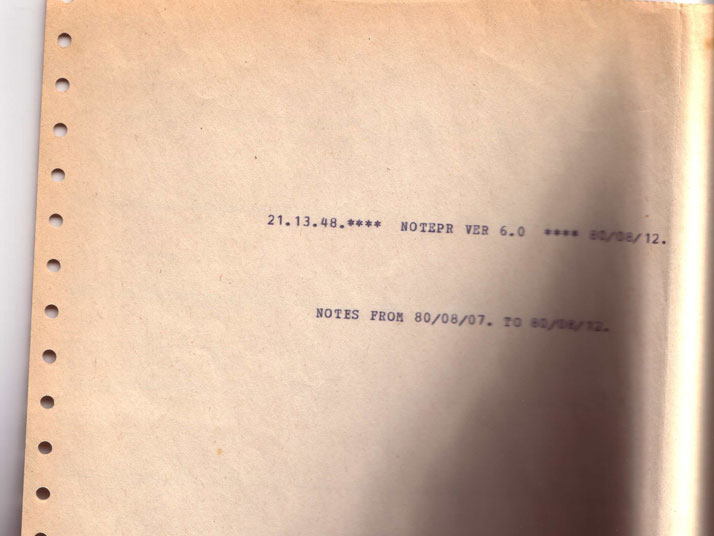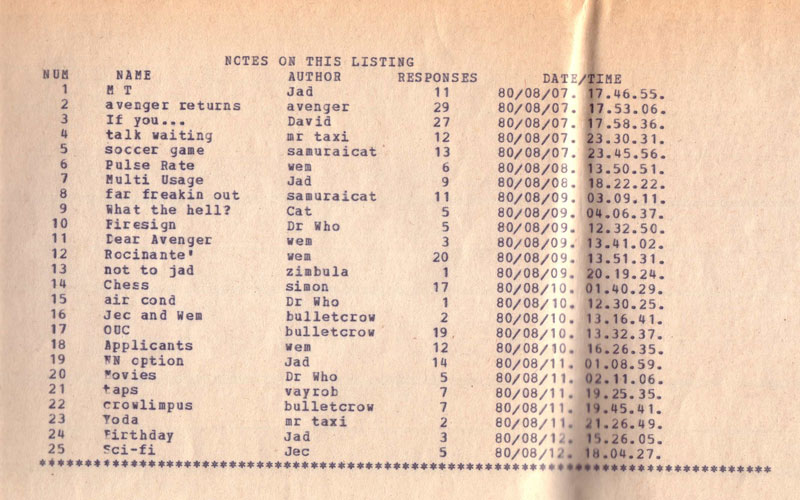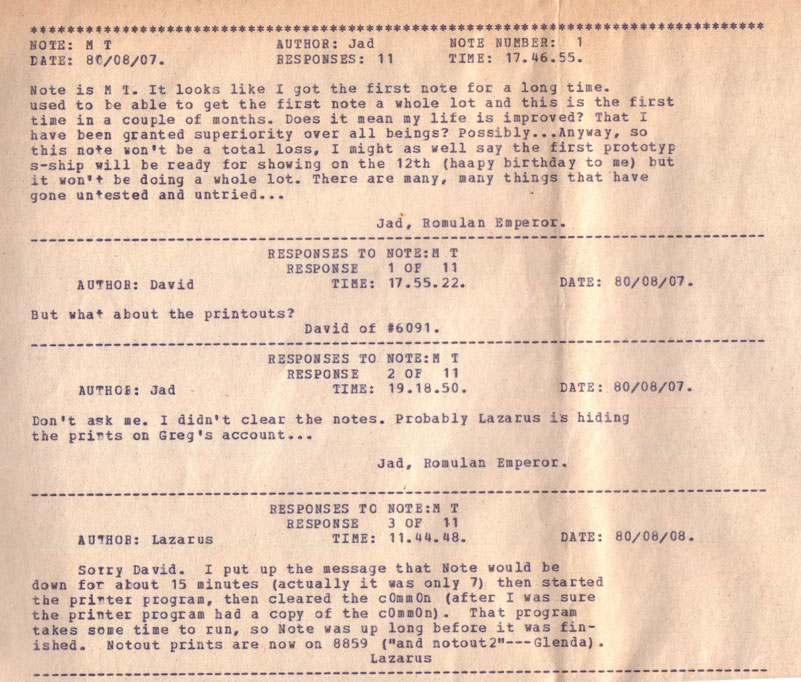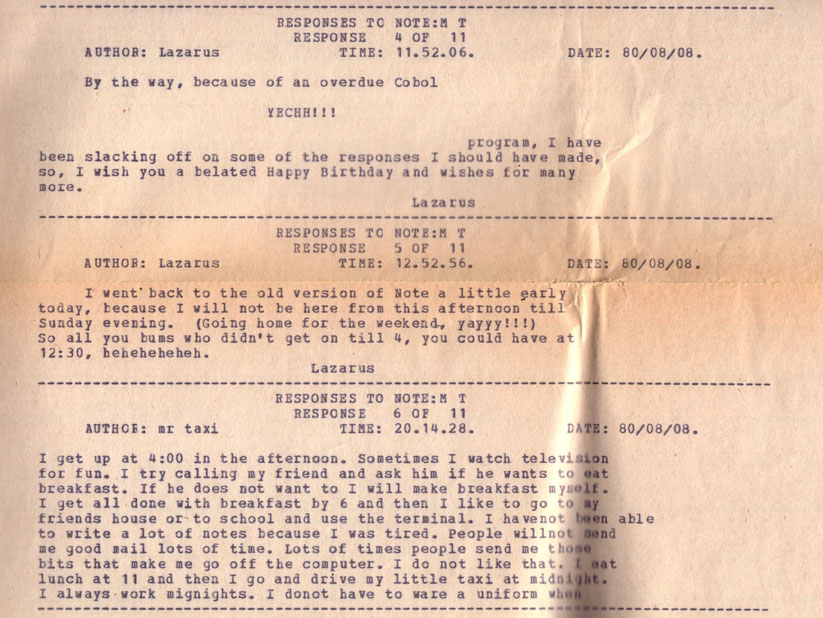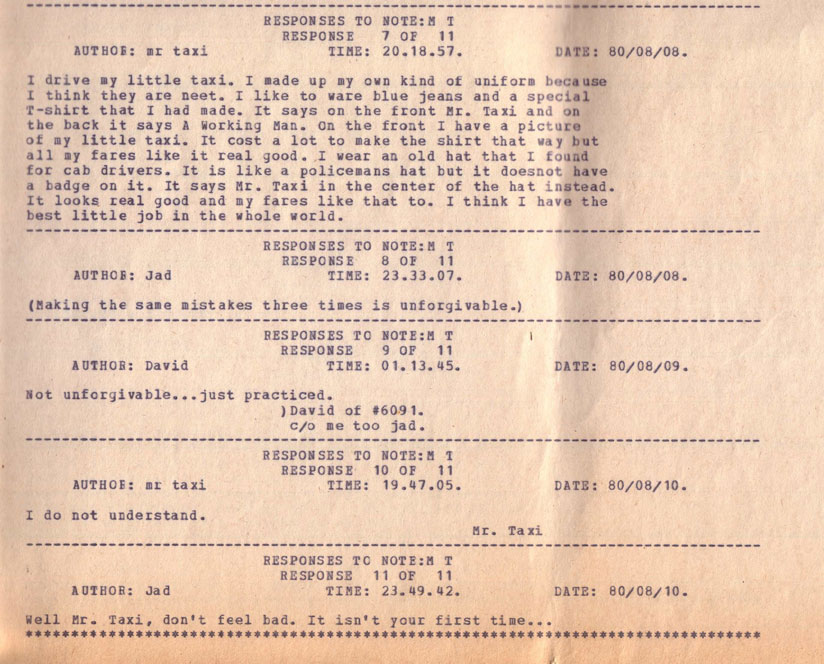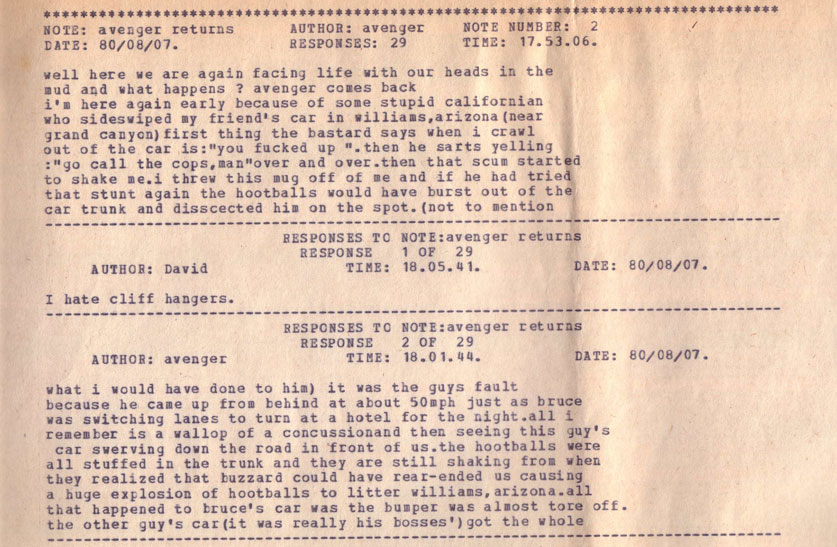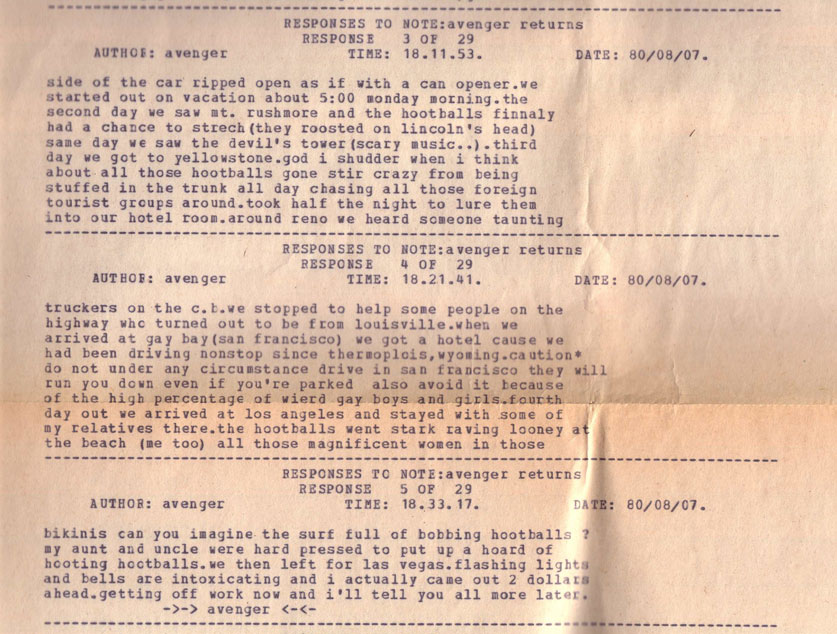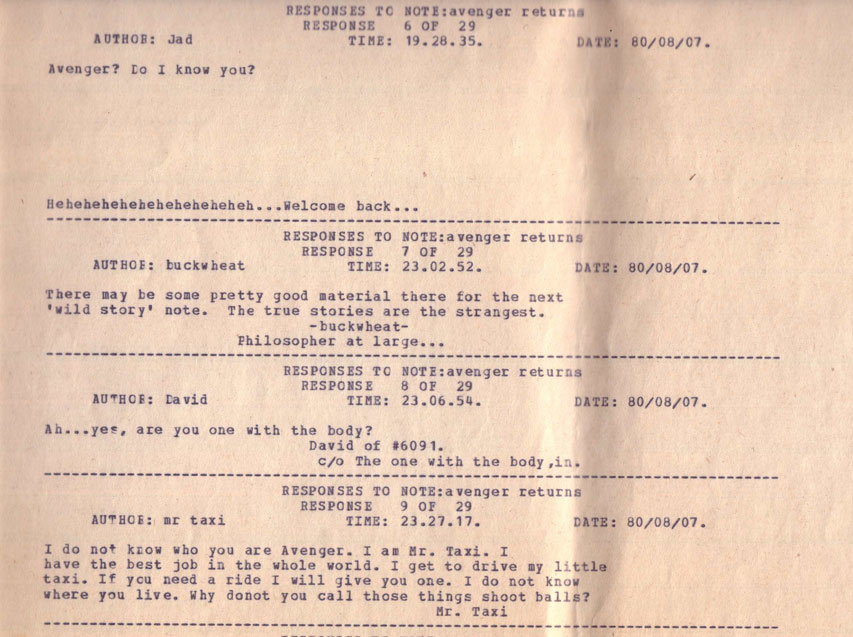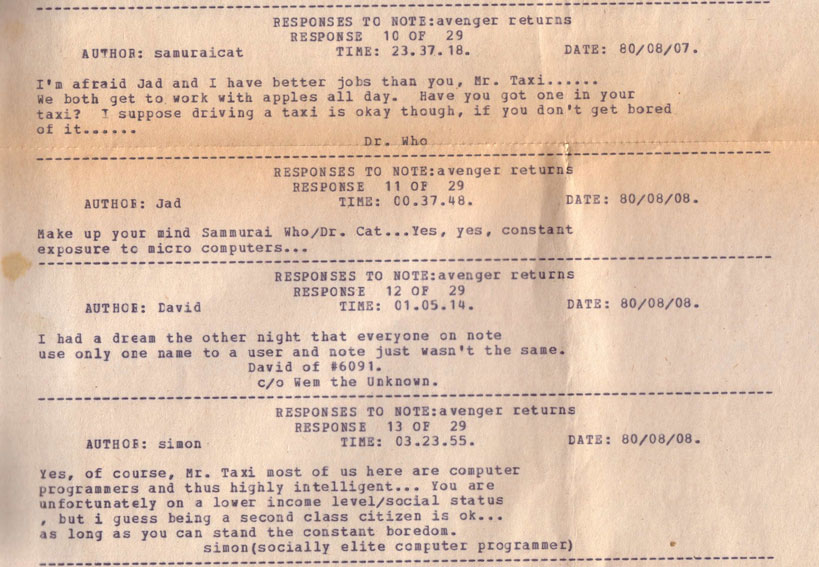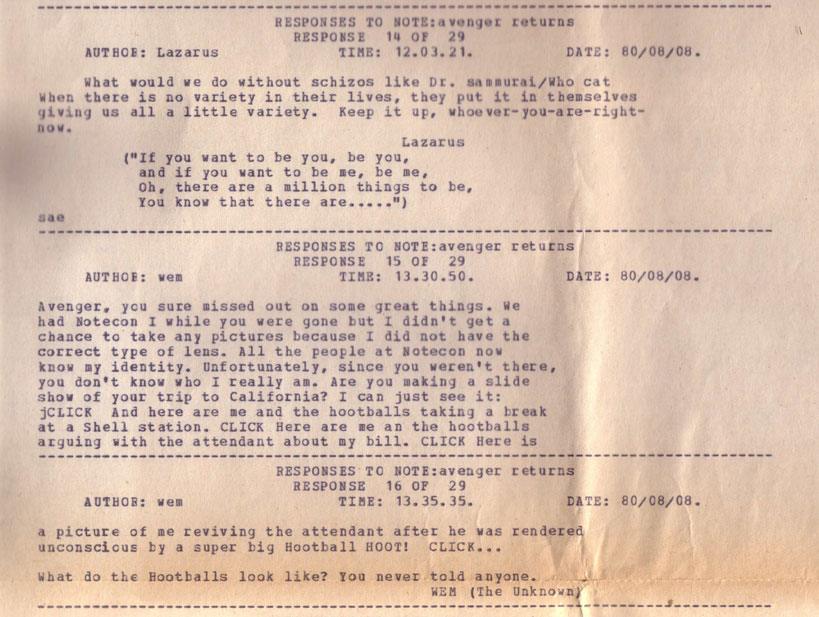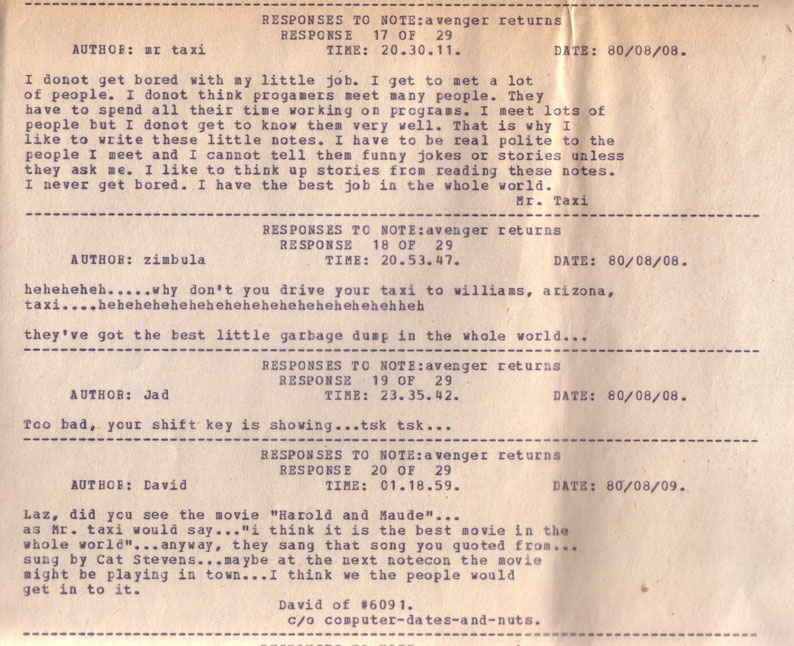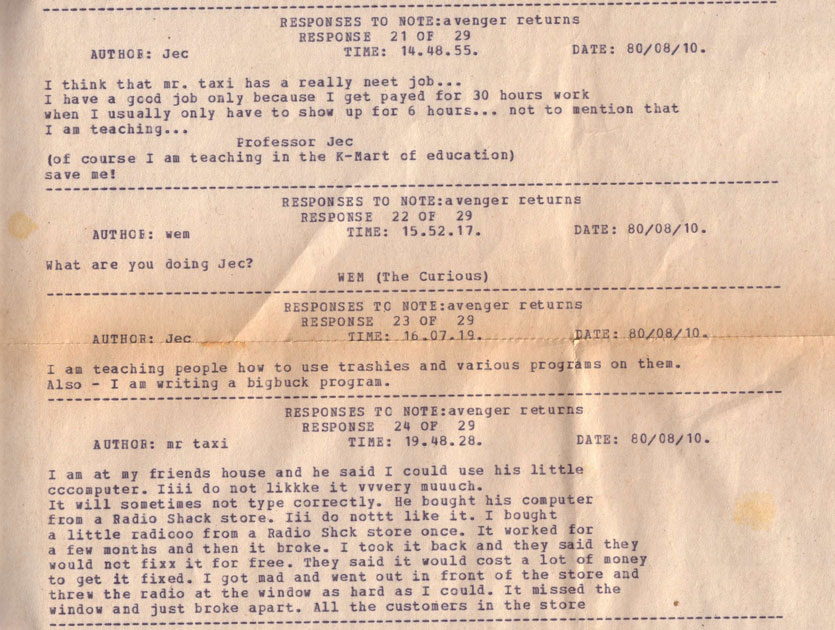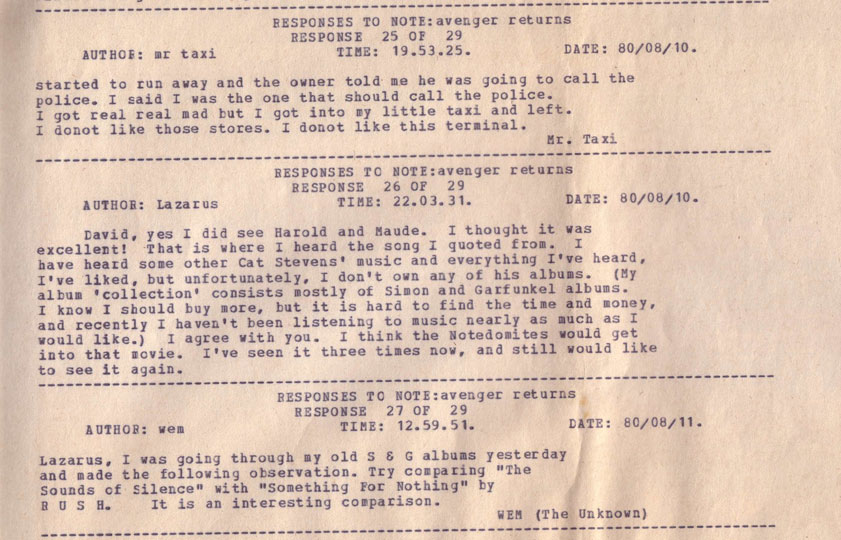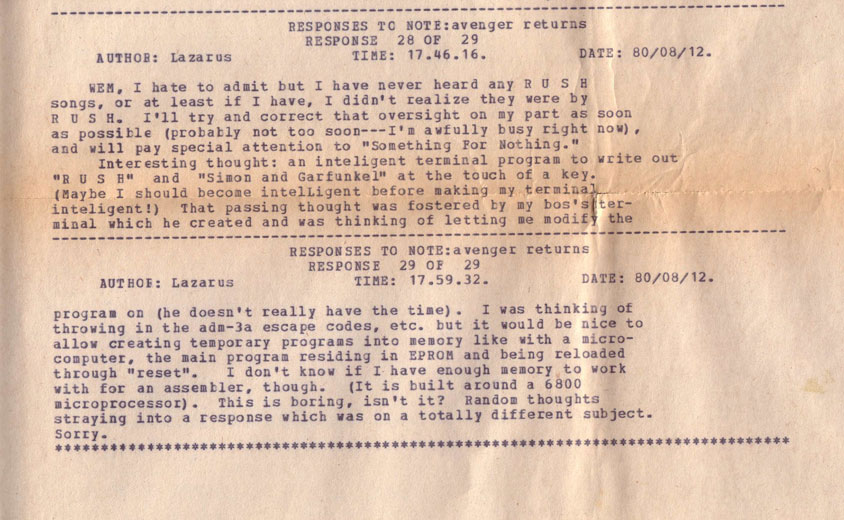Notes on Note
Comment on this (at bottom of page)
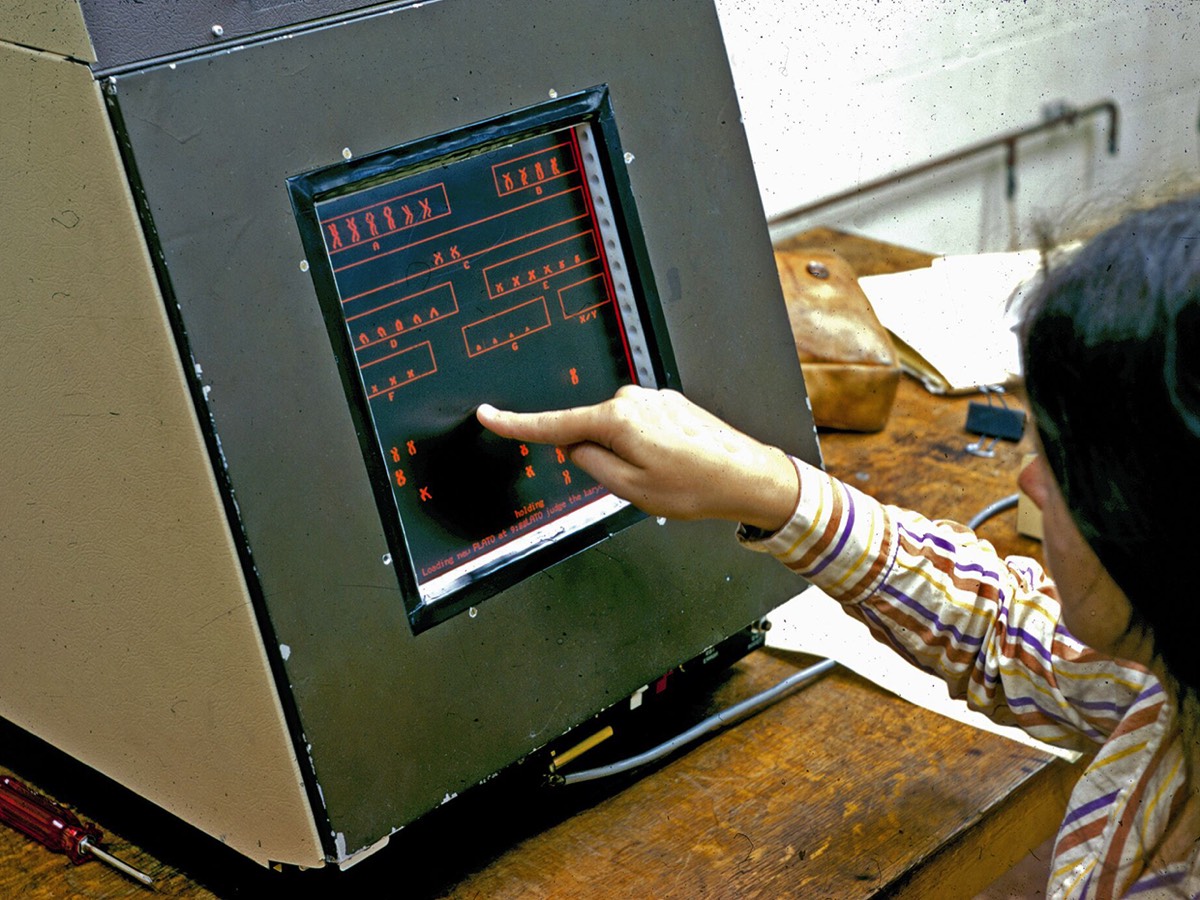
In 1975 I was exposed, through a student of my father's, to the PLATO system. PLATO was an online learning system (for lack of a better name) that was far ahead of its time. Hosted on a Control Data (CDC) 6400 supercomputer at the University of Illinois (where the HAL 9000 of 2001 fame was born), Plato connected to an array of terminals spread throughout the Midwest. One of those places was the third floor of the Indiana University library.
As a ten year old, I was enraptured. Plato terminals were unlike anything I had ever seen, sporting a 512x512 plasma display that could show…GRAPHICS!
But what really caught my attention was a system on Plato called "Notes." It was a place that people could go and start topics, read topics, and respond to topics. It was unlike anything I ever saw before.
Fortunately for me, access to PLATO was severely constrained. They had little tolerance for a snot-nosed ten year old screwing around on the system. However, Indiana University had its own Control Data supercomputer, a more powerful 6600 model. That system was far more accessible to me, through my father the professor.
I couple summers later (I used to visit Bloomington from Southern California, after my parents divorce) I had taught myself the FORTRAN programming language. I remembered Notes from a few years back and became determined to write my own version, running on the university's 6600.
FORTRAN, however, was not an ideal language in which to write an interactive program running on a mid-1960s vintage mainframe. I decided, for responsiveness and control reasons, that I needed to write Notes (which I called "Note") in assembly language. On the 6600, the assembly language was called COMPASS (COMPrehensive ASSembler).
So I taught myself COMPASS. I was fourteen at the time.
I went ahead an wrote Note. It became wildly popular on the system, which led to a lot of recrimination from the academic computing powers-that-be. They did not want their 6600 Supercomputer sullied with social activities, it was a serious machine that should only be doing serious things. This was when I gained my strong dislike of the information technology caste structure, a dislike that never seemed to do me much favors, at least when it came to greasing the wheels.
But I digress.
Note soldiered on for a number of years. I eventually ended up in high school and my attention turned, temporarily, away from the keyboard and towards girls. I handed over the reigns of Note to others, particularly Jon Bayh, and it continued to be a social hub for the local community into the early 1980s, when the 6600 was decommissioned (I still have parts from that computer in my garage).
Here are a few photographs of representative posts on Note. Note (ha!) that there are all of the social media elements that we today take for granted. In particularly, avatars, flame wars, inside humor, etc.
